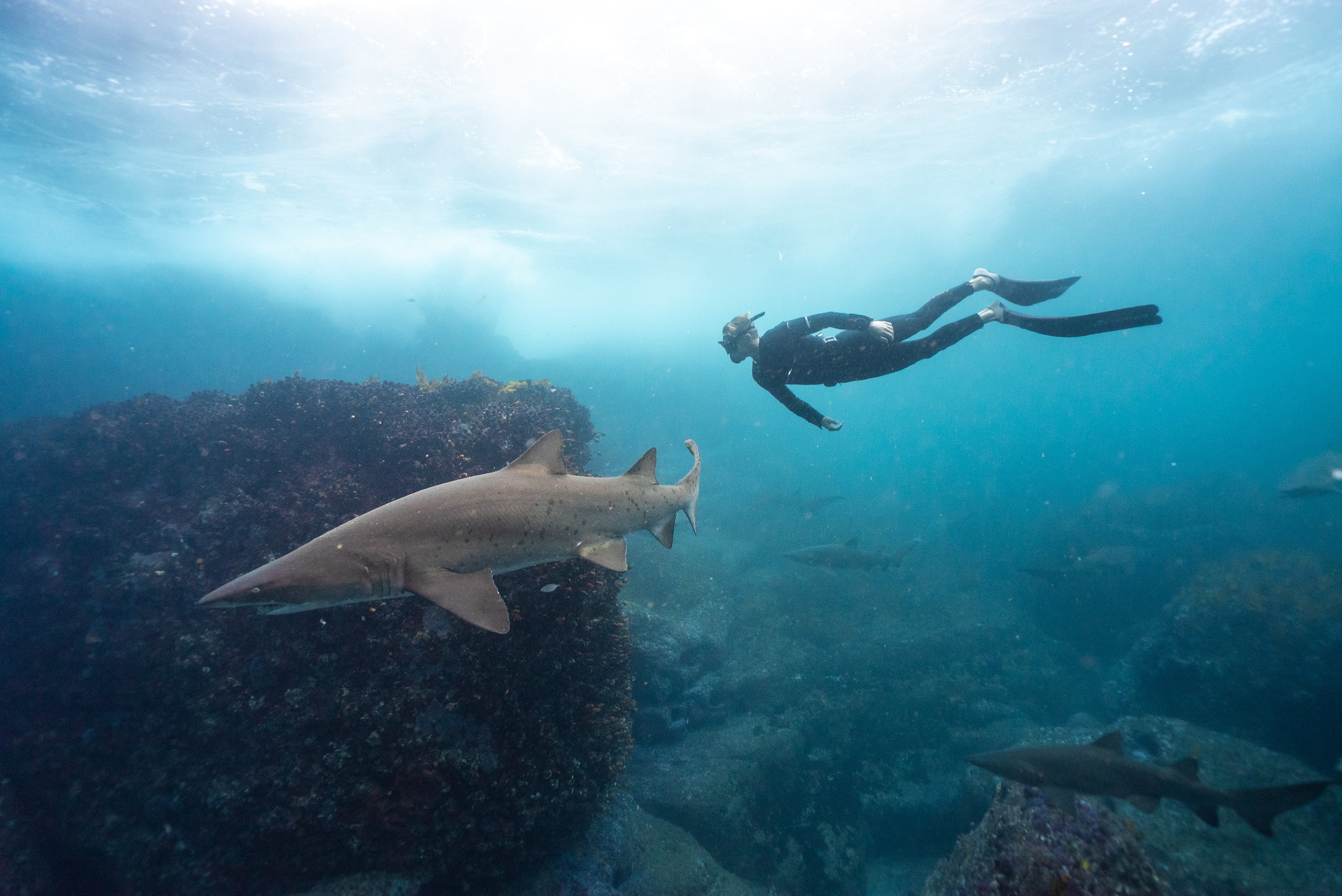Shark Farts and Weight Belts - A Marine Mystery Solved
Like most species of fish, sharks are ‘basal vertebrates’, meaning they oxygenate their bodies via gills and do not need to come up for air to breathe. Now what if I told you that one particular species of shark, that we are lucky enough to dive with in Jervis Bay, does in fact come up for air, despite having gills?
I posed this question to our ocean school kids during their class in week 3. As you can probably imagine, their explanations for this marine mystery were creative to say the least. Some even questioned whether the species was secretly a mammal in disguise, simply completing their recovery breaths after a dive.
The species I am referring to is the Grey Nurse shark (Carcharias taurus), otherwise known as the Sand tiger shark, or the Spotted ragged-tooth shark. Despite becoming the first protected species of shark in 1984, they are critically endangered on the East coast of Australia. Current population estimates average at less than 2000, having declined by 90% in the past 40 years. They can be found cruising in shivers throughout the Bay from December through to April, with potentially 50% of them bearing rope or hooks, on or inside them, due to their susceptibility to trawling entanglement and line fishing.
Although these magnificent creatures definitely aren’t mammals in disguise, their unique habit of surfacing nearby unexpectedly, with jaws open, is notorious for giving snorkelers a fright. I had always assumed that they took these gulps of air so they could stay still in the water, and not have to be constantly moving in order to have water flow over their gills. However, whilst researching, I was amazed to discover that the explanation for this behaviour has nothing to do with breathing and everything to do with buoyancy.
Unlike most species of shark which rely on large oil-filled livers to stay neutrally buoyant in the ocean, Grey Nurses have a completely different method of controlling their buoyancy. Their specialised stomach allows them to hold swallowed air, and therefore regulate how high or low they sit in the water. Our ocean school students were particularly excited to find out that these sharks actually fart out any excess air as they swim if they find they are too ‘floaty’. Despite the obvious humour, by gulping air and then farting it out again, Grey Nurse sharks are essentially doing what Freedivers do every time we enter the water - a weight check.
Just like these sharks, when we dive we need to think about our buoyancy. Humans are naturally buoyant when our lungs are full. This is especially relevant for Freedivers, as before a deep dive, we train to fill our lungs so completely, that we are capable of increasing their capacity and the elasticity of our intercostal and chest muscles. On top of a full set of lungs before a dive, we also often wear a wetsuit to stay warm, keeping us even more positively buoyant.
To combat this, instead of farting like a Grey Nurse, we wear a piece of equipment called a weight belt, that helps us to get down deeper, and stay underwater with less effort. We don’t want to be negatively buoyant, or sinking when we wear a weight belt, we still want to be positively buoyant and floating on the surface. It is the position of the belt on our hips, countering the buoyancy of our lungs when we do a duck dive that allows it to work. If you’re wearing a weight belt whilst diving there is a really simple way to check that you’ve got the correct amount of weights on:
Keep your body and fins completely still and float vertically in the water
Take a nice deep breath through your snorkel
Exhale passively with a sigh
Observe where the water level sits. Ideally your face should dip below the water, submerged up to between your eyes and your forehead. If you’re still way above the surface, add more weight. If you start to sink, take a weight off.
Now we’ve solved the mystery, if you’re lucky enough to dive with Jervis Bay’s Grey Nurse sharks before their season comes to an end in April, keep an eye out for any surfacing or farting! If you’re yet to see these magnificent creatures for yourself, join us out on the boat soon, we can’t wait to share the experience with you.





